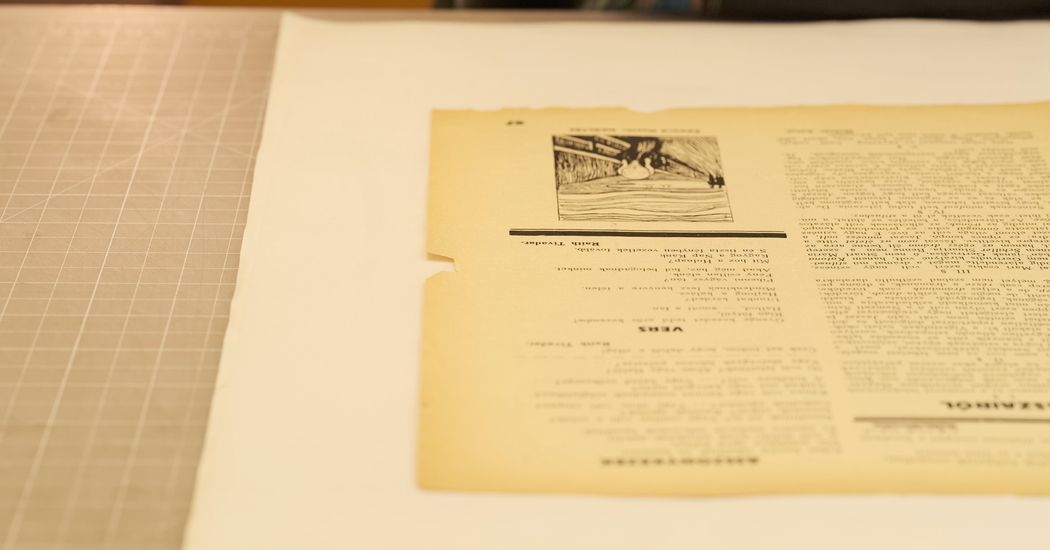
Not every workplace features a guillotine. At a book conservation lab tucked beneath the first floor of the Metropolitan Museum of Art, the office guillotine might as well be a water cooler or a file cabinet for all that it fazes the staff. “We have a lot of violent equipment,” said Mindell Dubansky, who heads the Sherman Fairchild Center for Book Conservation.
Fearsome machines are part of daily life at the lab, which serves as a hospital where ailing books from every department of the museum are restored to health. The lab’s six employees process an astonishing 2,500 books each year.
Those books arrive daily and are assessed for treatment by the conservation staff. As with any object made of organic materials, books degrade over time. Bindings break, pages tear and crumble, adhesive materials cease to adhere. Decay can be hastened by pests, mold, moisture, heat, cold and plain old use, among countless other factors. Some of the books are rare and valuable. Others are ordinary — say, a book from European Paintings that was dropped on the floor and suffered a broken spine.
“Unlike the rest of the art in this building, our work is being handled,” Dubansky said. “We have to intervene as little as possible while maintaining the function of a book — and making it look like we were never there.”
Although the Met has performed book maintenance in-house for nearly a century, it wasn’t until 2011 that the current facility, designed in close collaboration with conservation staff, opened its doors. With its antique tools, modern touches and intriguing rotation of patients, the renovated lab exudes a certain mad-scientist magic.
“For people who love books, entering the lab is like getting hit with Cupid’s arrow,” Dubansky said. “People walk through this door with a dazed expression on their face, wanting to dedicate their entire lives to making sure the books are OK.”
Dubansky has advice for readers who wish to keep their own books — rare or not — in superb condition. Light, dust and extreme fluctuations in temperature should be avoided. (“Basements and attics are not your friends.”) Don’t allow books to lean like the Tower of Pisa. Instead, store them in a vertical or horizontal position. Consider applying a Mylar dust jacket cover to books that warrant special protection. And as satisfying as it might be to “crack open” a book, do not actually crack open a book unless you’re aiming to cause spinal injury.
Of course, books are meant to be read and not just revered. When it comes to bookmarks, Dubansky recommended steering clear of Post-it notes and paper clips, both of which compromise the integrity of the underlying page. Leather bookmarks, while temptingly elegant, are too acidic for the job. When asked about the practice of dog-earing, Dubansky’s brows shot skyward: “Talk about flagrant abuse!”
The safest bookmark happens to be the easiest: a thin slip of regular old paper.






